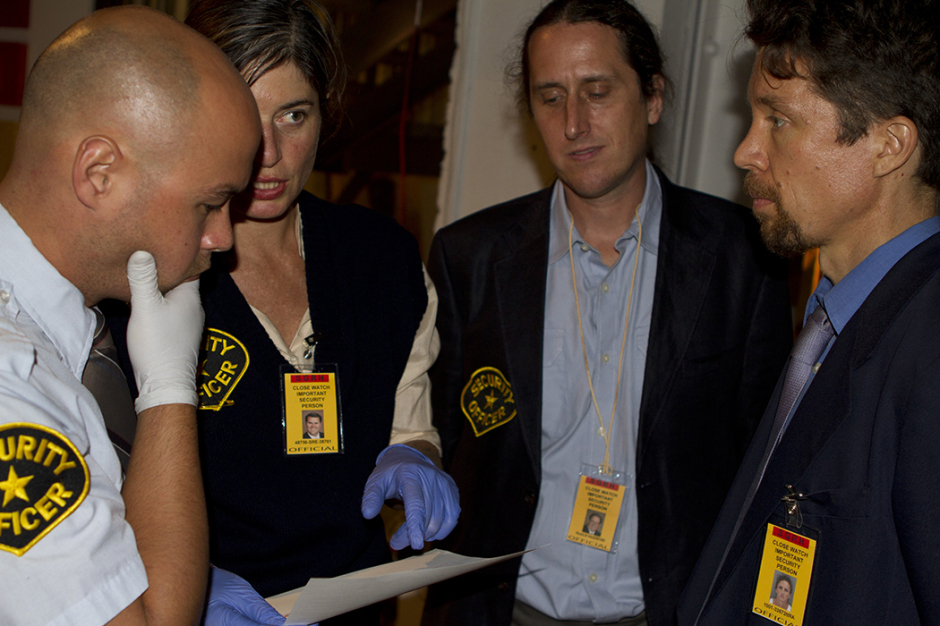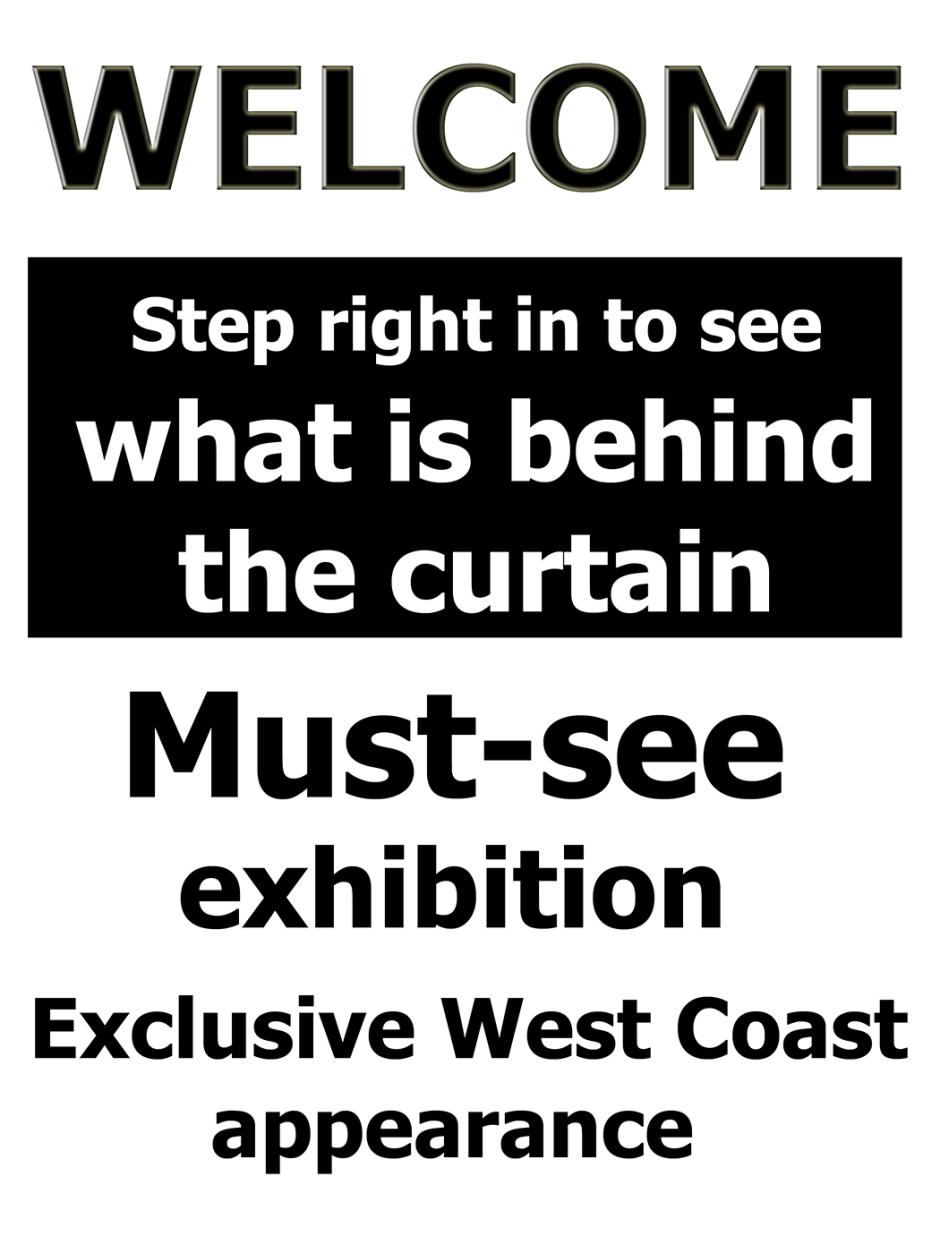It was a large room. Full of people. All kinds.
And they had all arrived at the same building
at more or less the same time.
And they were all free. And they were all
asking themselves the same question:
What is behind that curtain?
(Laurie Anderson, Born Never Asked )
What Is Behind That Curtain? Is a performance concerned with common scenarios of interactions in public spaces that involve watching and being watched, surrender of control and the blurring of boundaries between private and public, observer and observed. As the audience approaches the event space, curiosity is raised with large posters announcing a rare opportunity to view an important and mysterious object. Inside the performance space, a loudspeaker broadcasts a welcoming countdown to the next viewing. Audience members are informed that they must pass through a series of routine security checks before being allowed to view what is behind the curtain. Security checkpoints include predictable events such as metal detection, search or surrender of personal belongings, and a long wait. Participants anticipate the usual unpleasantness, but instead a search will result in encouragement and praise rather than fines or seizures. For instance, when audience members surrender their shoes for inspection, they have their feet washed by a security agent while another agent shines their shoes. Caught in an unending but kind and gentle loop of bureaucratic red tape, audience members are never allowed access to the much-anticipated viewing of the object, which, in fact, does not exist.
This performance facilitates human interactions that communicate social concerns and suggest hypothetical, holistic, sometime absurd and positive resolutions. In these type of projects I create circumstances in which both performers and audience have the opportunity to revisit distressing events such as security checks or entering an unknown territory with the possibility of a different outcome. Audience expectations, which are set by social cues such as bureaucratic conventions and uniforms, are quickly dislodged by the unexpected introduction of humanistic, magical, ritualistic and nostalgic elements.
Structure of the performance
Similar to Dungeons and Dragons, this project sets up a constructed situation as a framework in which, through role play, participants have agency in the development of the work.
Like the dungeon master I am the director, organizer, and storyteller and each collaborator creates her/his own character to perform within the parameters that I assign. Performers interact with the setting, the audience and with each other and a large component of the work is constituted by the dialogue or interactions that the situation elicits.
Participants: Signe Brewer, Paul Greyson, Yariv Keinan, Sebastian Hyde, Brad Sagara, Leif Granberg, Lee Whitefield.

















